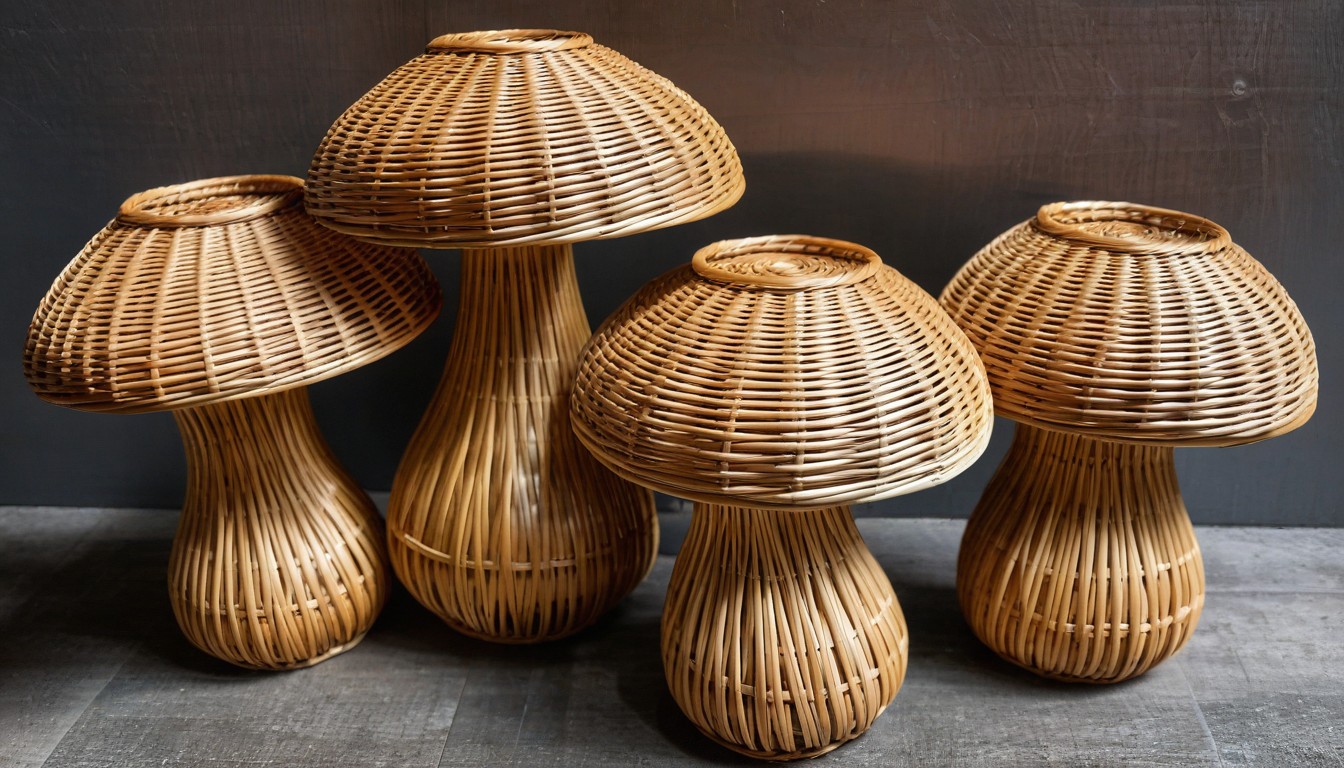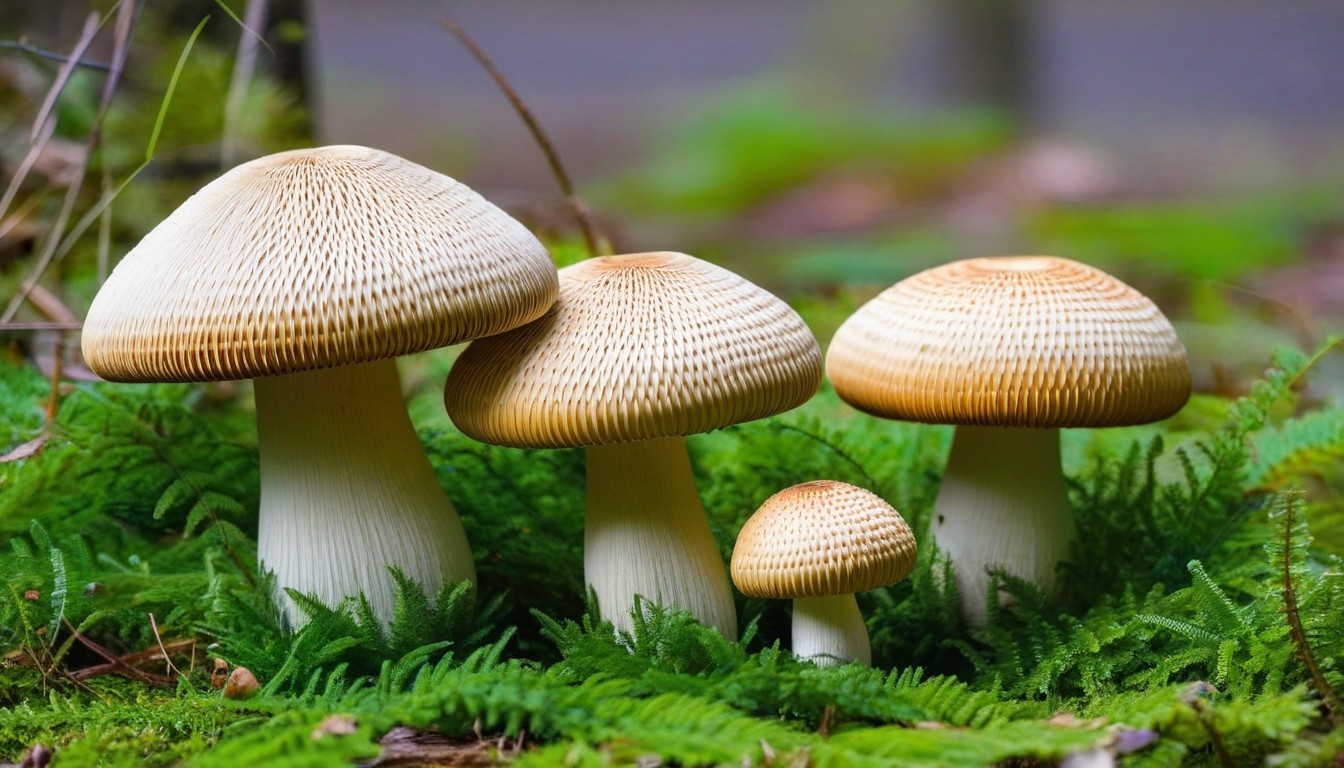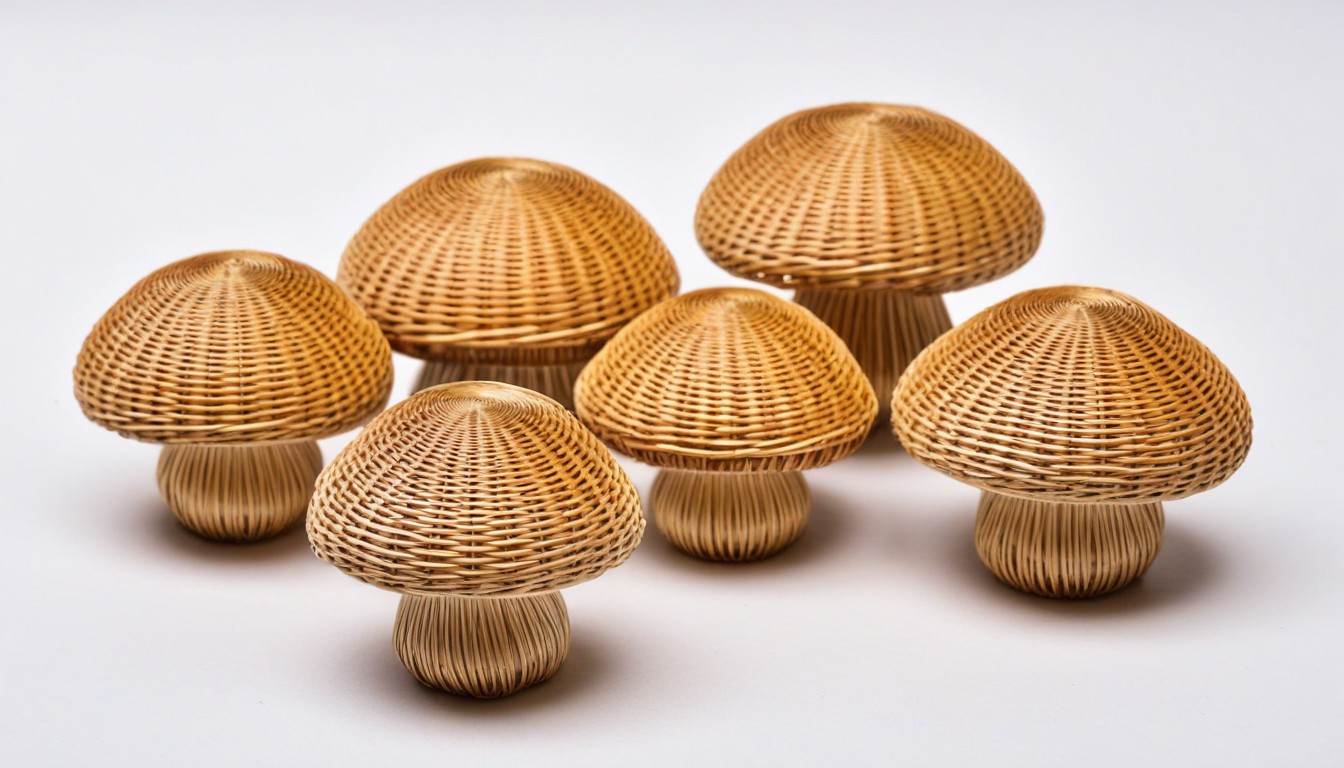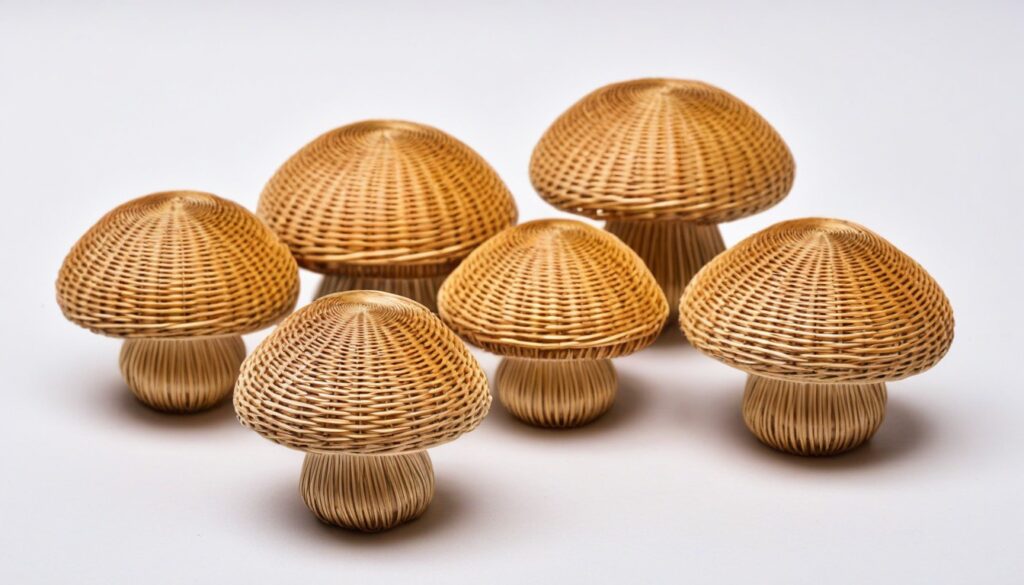If you are looking for a new culinary adventure, consider trying Rattan Mushrooms. These exotic mushrooms are not only deliciously flavorful – they also offer a range of nutritional benefits.
Unlike common mushrooms found at your local grocer, Rattan Mushrooms boast a unique appearance and texture, making them a sought-after delicacy in many cultures.
Whether you are a foodie looking to expand your palate or simply seeking out a nutritious ingredient to add to your diet, Rattan Mushrooms are worth exploring. In this article, we’ll dive into what makes Rattan Mushrooms so special and why they’ve become a popular choice for adventurous cooks around the world.
Key Takeaways:
- Rattan Mushrooms are an exotic and nutritious delicacy that offer a unique flavor and texture.
- These mushrooms have a rich nutritional profile, containing vitamins, minerals, and antioxidants.
- The cultivation process for Rattan Mushrooms can be challenging, requiring specific growing conditions and techniques.
- Rattan Mushrooms have a rich cultural history and have been used in traditional medicine and cuisine for many years.
- There are several different varieties and species of Rattan Mushrooms, each with their own unique characteristics and culinary applications.
What are Rattan Mushrooms?
Rattan mushrooms are a type of exotic mushroom native to Southeast Asia, particularly found in Thailand, Laos, and Vietnam. They belong to the genus Lentinus and are known for their unique physical characteristics and savory flavor.
These mushrooms have a distinct appearance, with a cap that ranges in color from light brown to reddish-brown, and typically measures between 5-12 cm in diameter. The surface of the cap is dry and scaly while the underside bears numerous cream-colored gills that run down the stem.
The stem is cylindrical, fibrous, and measures approximately 2-5 cm in length and 3-5 mm in diameter. It is often tough and chewy and has a slightly sweet and nutty flavor. The overall texture of the Rattan mushroom is firm and meaty, making it an excellent meat substitute in vegetarian and vegan dishes.
“Rattan mushrooms offer an exotic twist to vegetarian and vegan dishes, providing a unique texture and flavor that can be used in a variety of dishes.”
Their taste has been described as nutty and slightly sweet, making them a popular choice for stir-fries, soups, curries, stews, and other savory dishes. Due to their rich umami flavor, they are also ideal for enhancing the taste of meat-based dishes.
|
Rattan Mushrooms Physical Characteristics: | |
|---|---|
|
Cap color |
Light brown to reddish-brown |
|
Cap diameter |
5-12 cm |
|
Gill color |
Cream-colored |
|
Stem length |
2-5 cm |
|
Stem diameter |
3-5 mm |
|
Texture |
Firm and meaty |
Overall, Rattan mushrooms offer a unique culinary experience that combines a distinctive appearance, savory flavor, and meaty texture. Their versatile nature makes them an excellent addition to a variety of dishes, adding both taste and nutritional value.
Cultivation of Rattan Mushrooms
Rattan Mushrooms are typically found growing in the subtropical and tropical regions of Asia, particularly in countries such as Thailand, Cambodia, and Vietnam. Cultivating these mushrooms have recently become popular among home gardeners due to their unique flavor and nutritional value.
The ideal conditions for growing Rattan Mushrooms include warm temperatures ranging from 25°C to 30°C and high humidity levels. The mushrooms grow well in well-drained, nutrient-rich soil and prefer indirect sunlight. The cultivation process can be started by purchasing seeds, spores, or an existing crop from a reputable supplier.
Once the mushroom seeds or spores are obtained, they can be planted into a substrate made of sawdust, bran, and other organic materials. The substrate should be sterilized to prevent any unwanted bacteria or fungi from growing. The seeds or spores are then spread evenly across the substrate and left to incubate for several weeks.
During the incubation process, the substrate should be kept moist and in a warm, dark environment. Once the substrate is fully colonized with mycelium, the mushrooms will start to grow. The process of fruiting can take up to several weeks, and it requires consistent management of temperature, humidity, and light exposure to ensure healthy, robust growth.
Overall, cultivating Rattan Mushrooms can be a rewarding experience for those willing to invest the time and effort to do it right. The growing techniques may be challenging, but the nutritional benefits and unique flavor of these exotic mushrooms are undoubtedly worth it.
Nutritional Value of Rattan Mushrooms
Rattan mushrooms are an excellent addition to a healthy diet, as they boast an impressive range of vitamins, minerals, and antioxidants. These exotic delicacies are a low-calorie food, containing only 24 calories per 100 grams, making them a guilt-free option for weight management.
Rich in potassium, magnesium, and phosphorus, rattan mushrooms also offer a unique blend of vitamins, including vitamin C, vitamin A, and B-complex vitamins such as riboflavin and niacin.
Additionally, these mushrooms act as a natural source of antioxidants, which help to prevent cell damage and reduce the risk of chronic diseases such as cancer, heart disease, and Alzheimer’s. They also contain beta-glucans, molecules that boost the immune system and may improve digestion and cholesterol levels.
|
Nutrient |
Amount per 100g |
|---|---|
|
Calories |
24 |
|
Protein |
2.8g |
|
Fat |
0.5g |
|
Carbohydrates |
2.3g |
|
Dietary Fiber |
1.0g |
|
Potassium |
702mg |
|
Magnesium |
56mg |
|
Phosphorus |
275mg |
|
Vitamin C |
3.0mg |
|
Vitamin A |
2IU |
|
Riboflavin (B2) |
0.4mg |
|
Niacin (B3) |
3.1mg |
Overall, incorporating rattan mushrooms into your diet can bring a range of potential health benefits, making this exotic delicacy well worth trying.
Culinary Uses of Rattan Mushrooms

Rattan Mushrooms are a versatile ingredient that can be used in a wide range of dishes, from appetizers to main courses and even desserts. They have a mildly nutty flavor, which pairs well with a variety of herbs and spices.
Cooking Methods for Rattan Mushrooms:
Rattan Mushrooms can be cooked in several ways, depending on the desired texture and flavor. They can be boiled, steamed, stir-fried, or sautéed. Boiling or steaming is ideal for making mushroom soup or broth. Stir-frying or sautéing is perfect for quick and easy dishes, such as stir-fried vegetables or mushroom curry.
Delicious Rattan Mushroom Recipes:
Looking for the perfect recipe to try with Rattan Mushrooms? Here are a few ideas:
- Rattan Mushroom and Spinach Quiche: A cheesy and savory quiche, perfect for breakfast, brunch, or lunch.
- Rattan Mushroom and Shrimp Stir-Fry: A quick and easy stir-fry that is healthy and delicious.
- Rattan Mushroom Risotto: A classic Italian-style dish that is creamy and satisfying.
Benefits of Cooking with Rattan Mushrooms:
Rattan Mushrooms are not only delicious, but they also offer several health benefits. They are low in calories and high in protein, making them an excellent ingredient for weight loss diets. They also contain antioxidants and anti-inflammatory compounds, which can help reduce the risk of chronic diseases such as cancer and heart disease.
|
Recipe Name |
Description |
|---|---|
|
Rattan Mushroom and Spinach Quiche |
A cheesy and savory quiche, perfect for breakfast, brunch, or lunch. |
|
Rattan Mushroom and Shrimp Stir-Fry |
A quick and easy stir-fry that is healthy and delicious. |
|
Rattan Mushroom Risotto |
A classic Italian-style dish that is creamy and satisfying. |
Whether you are a professional chef or just learning to cook, Rattan Mushrooms are a great ingredient to experiment with. They offer a unique and exotic flavor that will elevate any dish and impress your guests.
Rattan Mushrooms in Traditional Medicine

For centuries, Rattan Mushrooms have been treasured as a medicinal ingredient in traditional medicine. Believed to have various healing properties, these exotic mushrooms have been used to treat a range of ailments, from respiratory and digestive issues to cancer and diabetes.
The medicinal properties of Rattan Mushrooms are attributed to their high concentration of polysaccharides, which are complex carbohydrates that stimulate the immune system. These polysaccharides are also thought to have antioxidant and anti-inflammatory effects, making Rattan Mushrooms a potential treatment for a variety of chronic diseases.
In traditional Chinese medicine, Rattan Mushrooms have been used to improve blood circulation and digestion, relieve fatigue, and boost the immune system. Meanwhile, in Thailand, Rattan Mushrooms have been used as a natural remedy to alleviate coughs and respiratory problems.
Despite the lack of scientific evidence to support their efficacy, Rattan Mushrooms remain a highly valued medicinal ingredient in many cultures around the world. Whether consumed in a traditional soup or taken in the form of a supplement, these mushrooms continue to offer a natural and exotic way to improve one’s health and well-being.
Rattan Mushrooms in Traditional Cuisine
Rattan Mushrooms have long been a part of traditional cuisine in various cultures, where they are highly prized for their unique flavor and texture. In Southeast Asian cuisine, Rattan Mushrooms are a staple ingredient, used in a wide range of dishes for their earthy, nutty taste and chewy texture.
Indonesian cuisine, in particular, features Rattan Mushrooms in a variety of dishes, like Udang Balado, a spicy shrimp dish. In Malaysian cuisine, they can be found in a popular dish called Sambal Udang Petai, which features Rattan Mushrooms paired with spicy shrimp paste. In Chinese cuisine, Rattan Mushrooms are used in hot pot dishes and soups, adding a unique texture to the meal.
Across cultures, Rattan Mushrooms are considered a cultural delicacy, often served on special occasions and celebrations. Their longstanding history as a traditional ingredient highlights their cultural significance and the value placed on their unique flavor profile.
|
Country |
Dish |
|---|---|
|
Indonesia |
Udang Balado – Spicy shrimp dish |
|
Malaysia |
Sambal Udang Petai – Spicy shrimp paste dish |
|
China |
Hot Pot and soup dishes |
If you’re looking to experiment with traditional cuisine and try Rattan Mushrooms for yourself, consider exploring the vibrant and diverse offerings of Southeast Asian cuisine. You’re sure to encounter these flavorful mushrooms in a range of dishes that showcase their unique taste and texture.
Where to Find Rattan Mushrooms?

Rattan Mushrooms are predominantly found in the tropical regions of Southeast Asia, specifically in countries like Indonesia, Thailand, Malaysia, and the Philippines. These exotic mushrooms grow in clusters, usually on deadwood or decaying trees in dense forest areas.
When it comes to sourcing, Rattan Mushrooms are not as readily available as other popular mushrooms. They are often harvested by local farmers and foragers and sold in local markets. However, some specialty online stores may offer Rattan Mushrooms for purchase, especially during the peak season.
If you are interested in trying Rattan Mushrooms in your culinary creations, keep in mind that availability may be limited. It’s always a good idea to check with local specialty food stores or online sources to see if they offer Rattan Mushrooms.
Rattan Mushrooms: A Gastronomic Adventure
Are you ready to embark on a culinary journey like no other? Look no further than Rattan Mushrooms, the exotic delicacy that promises a gastronomic experience unlike any other. With their unique flavors and textures, Rattan Mushrooms can add depth and complexity to any dish, from soups and stews to curries and stir-fries.
Don’t be intimidated by their exotic reputation – Rattan Mushrooms are surprisingly versatile and easy to cook with. Whether you’re a seasoned chef or a beginner in the kitchen, these nutritious delicacies are sure to impress.
“Rattan Mushrooms are truly a hidden gem in the world of gastronomy. Their earthy, nutty flavor and meaty texture make for a truly unforgettable dining experience.”
So why not take a chance on Rattan Mushrooms and treat your taste buds to a one-of-a-kind adventure? Not only will you be introducing your palate to a new exotic delicacy, but you’ll also be reaping the nutritional benefits of these unique mushrooms.
Health Benefits of Rattan Mushrooms
The incredible Rattan Mushrooms are not just a feast for the taste buds but also offer numerous health benefits. These exotic delicacies can help boost your immune system, improve digestion, and support overall well-being.
The high levels of antioxidants in Rattan Mushrooms offer potent anti-inflammatory and antiviral properties that help enhance your immune system. These mushrooms also demonstrated potent immunomodulatory effects, meaning they can modulate the immune system’s response to infection and disease.
Rattan Mushrooms are rich in dietary fiber, making them essential for good digestive health. These fibers help regulate bowel movements, prevent constipation and diarrhea, and improve nutrient absorption.
Moreover, the mycochemicals in Rattan Mushrooms have potent anti-tumor, anti-diabetic, and anti-obesity effects. They can lower blood sugar levels, inhibit the growth of cancer cells, and prevent obesity by suppressing adipocyte differentiation.
|
Health Benefit |
Description |
|---|---|
|
Boosts Immune System |
The antioxidants in Rattan Mushrooms show potent anti-inflammatory and antiviral properties that can enhance the immune system. They are also effective in modulating the immune response to infection and disease. |
|
Improves Digestion |
The high fiber content in Rattan Mushrooms supports good digestive health. It helps regulate bowel movements, prevent constipation and diarrhea, and improve nutrient absorption. |
|
Prevents Chronic Diseases |
Mycochemicals in Rattan Mushrooms have anti-tumor, anti-diabetic, and anti-obesity effects. They can help lower blood sugar levels, inhibit the growth of cancer cells, and prevent obesity. |
Include Rattan Mushrooms in your diet to enjoy their exquisite flavor and reap the numerous health benefits they offer.
Exploring the Fascinating World of Rattan Mushroom Varieties
While all Rattan Mushrooms share some common features, such as their unique appearance and meaty texture, there are several varieties of this exotic delicacy that offer distinct flavors and culinary opportunities.
White Vein Rattan Mushroom (Ganoderma neo-japonicum)
|
Characteristics |
Culinary Uses |
|---|---|
|
This variety features a thin, white vein running down its spore surface, contrasting with its dark brown color. |
Often used for medicinal purposes for its believed benefits such as prevention of allergies, hypertension, and anti-tumor properties, it is also used for making teas and soups. |
Black Rattan Mushroom (Ganoderma lucidum)
|
Characteristics |
Culinary Uses |
|---|---|
|
This variety is characterized by its shiny black exterior and the absence of any white lines. |
Due to its pleasant woody taste, it is widely used in soups, stews and also brewed as a tea. Highest in levels of polysaccharides, it is also said to be effective in reducing cholesterol levels. |
Red Rattan Mushroom (Ganoderma resinaceum)
|
Characteristics |
Culinary Uses |
|---|---|
|
Known for its glossy red exterior, this variety is relatively less common but the most potent in its medicinal benefits. |
Said to have anti-aging and anti-inflammatory effects, it is used in medicinal practices to boost the immune system and in culinary arts to enhance the taste of soups, stir-fries, and other dishes. |
Each Rattan Mushroom variety has a unique flavor profile and culinary potential, making them a versatile ingredient in many dishes. From classic soups and stews to teas and stir-fries, the possibilities are endless.
Conclusion
After exploring the world of Rattan Mushrooms, it’s clear that these exotic delicacies offer a wealth of benefits and opportunities for adventurous food lovers. From their unique appearance and cultivation process to their rich nutritional profile and culinary versatility, Rattan Mushrooms are a true gastronomic adventure.
Not only are they a delicious addition to any dish, but they also offer a range of potential health benefits, including immune system support and improved digestion. And for those interested in traditional medicine, Rattan Mushrooms have been used for centuries to treat a variety of ailments.
Whether you’re a seasoned chef or just starting out, Rattan Mushrooms are a must-try ingredient that will add a touch of exoticism and excitement to any recipe. So why not venture into the world of Rattan Mushrooms and discover what this nutritious and versatile delicacy has to offer?
FAQ
What are Rattan Mushrooms?
Rattan Mushrooms are a type of exotic mushroom known for their unique appearance and nutritious qualities. They have a distinctive pattern on their cap resembling rattan or wicker, which gives them their name. These mushrooms are highly sought after for their delicate flavor and are considered a delicacy in many cuisines.
How are Rattan Mushrooms cultivated?
Cultivating Rattan Mushrooms requires specific growing conditions. They are typically grown in a controlled environment with specific temperature and humidity levels. The mushrooms are cultivated using different techniques, including spore inoculation and substrate colonization. The cultivation process can be challenging but rewarding for those who are willing to put in the effort.
What is the nutritional value of Rattan Mushrooms?
Rattan Mushrooms are packed with essential nutrients. They are a rich source of vitamins, minerals, and antioxidants. These mushrooms are low in calories and fat, making them a great addition to a healthy diet. Consuming Rattan Mushrooms can provide various health benefits, including improved immune function and enhanced digestion.
How can Rattan Mushrooms be used in cooking?
Rattan Mushrooms can be used in a variety of culinary creations. They can be sautéed, stir-fried, or used in soups and stews. Their unique flavor and texture make them a versatile ingredient that enhances the taste of any dish. There are numerous recipes available that highlight the distinct qualities of Rattan Mushrooms.
Do Rattan Mushrooms have any medicinal properties?
Rattan Mushrooms have a long history of traditional medicinal use. They are believed to have various health benefits, including boosting the immune system and improving overall well-being. While more research is needed to fully understand their medicinal properties, Rattan Mushrooms are valued for their potential therapeutic value.
Are Rattan Mushrooms commonly used in traditional cuisines?
Yes, Rattan Mushrooms have a significant presence in traditional cuisines. They are considered a cultural delicacy in many regions, where they are used in various dishes to enhance flavor and provide a unique dining experience. From Asian stir-fries to European gourmet cuisine, Rattan Mushrooms add a touch of exoticism to traditional dishes.
Where can I find Rattan Mushrooms?
Rattan Mushrooms are commonly found in certain regions around the world. They are frequently foraged in forests with specific environmental conditions. Additionally, they can be sourced from specialty grocery stores or online suppliers. It is important to note that the availability of Rattan Mushrooms may vary depending on the season and location.
What makes Rattan Mushrooms a gastronomic adventure?
Rattan Mushrooms offer a gastronomic adventure due to their unique flavors and textures. Exploring different culinary techniques and recipes with Rattan Mushrooms allows food lovers to experience a new level of creativity and indulge in a truly exotic delicacy. Incorporating Rattan Mushrooms into your cooking repertoire is sure to impress and delight your taste buds.
What are the health benefits of Rattan Mushrooms?
Rattan Mushrooms offer numerous health benefits. They are known to boost the immune system, improve digestion, and support overall well-being. These mushrooms contain antioxidants that help protect the body against free radicals, aiding in the prevention of various diseases. Incorporating Rattan Mushrooms into your diet can contribute to a healthy lifestyle.
Are there different varieties of Rattan Mushrooms?
Yes, there are different varieties and species of Rattan Mushrooms. Each variety possesses its own unique characteristics, such as taste, texture, and appearance. Some popular varieties include the White Rattan Mushroom, Brown Rattan Mushroom, and Golden Rattan Mushroom. Each variety offers a distinct gastronomic experience, allowing for culinary exploration.

